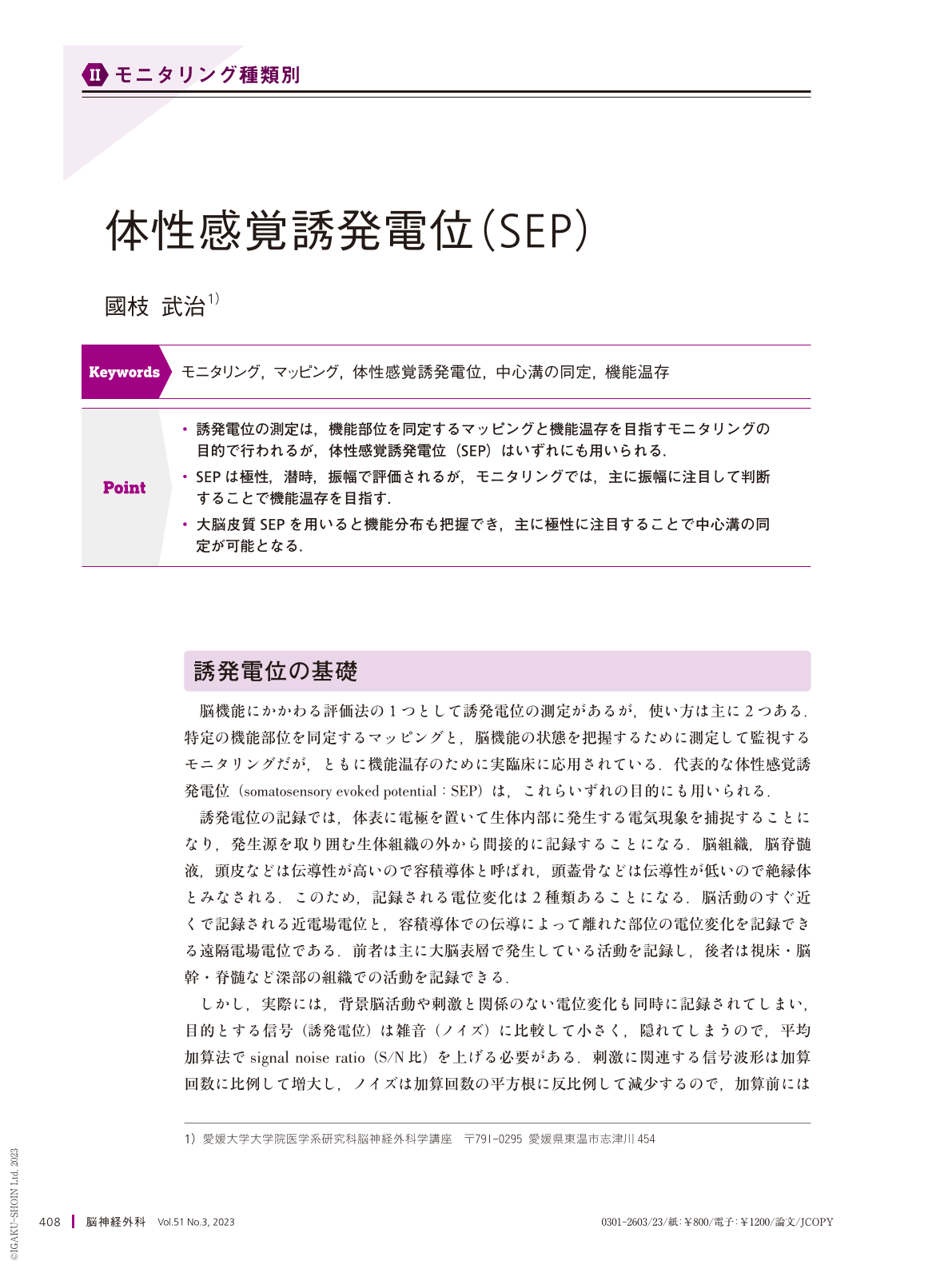Japanese
English
- 有料閲覧
- Abstract 文献概要
- 1ページ目 Look Inside
- 参考文献 Reference
Point
・誘発電位の測定は,機能部位を同定するマッピングと機能温存を目指すモニタリングの目的で行われるが,体性感覚誘発電位(SEP)はいずれにも用いられる.
・SEPは極性,潜時,振幅で評価されるが,モニタリングでは,主に振幅に注目して判断することで機能温存を目指す.
・大脳皮質SEPを用いると機能分布も把握でき,主に極性に注目することで中心溝の同定が可能となる.
The measurement of somatosensory evoked potentials(SEPs)is a basic clinical technique used for functional mapping and monitoring of brain and spinal cord responses during surgery. Since the potential evoked by a single stimulus is smaller compared to the surrounding electrical activity(background brain activity and/or electromagnetic artifacts), the average measurement of responses to multiple controlled stimuli across time-locked trials must be taken to determine the resultant waveform. SEPs can be analyzed in terms of polarity, latency from stimulus onset, or the amplitude from the baseline for each waveform component. The amplitude is used for monitoring purposes, while the polarity is used for mapping purposes. For example, an amplitude 50% lower than that of the control waveform may suggest the presence of significant influence on the sensory pathway, whereas a phase reversal in polarity, established by a cortical SEP distribution, usually indicates localization to the central sulcus.

Copyright © 2023, Igaku-Shoin Ltd. All rights reserved.


